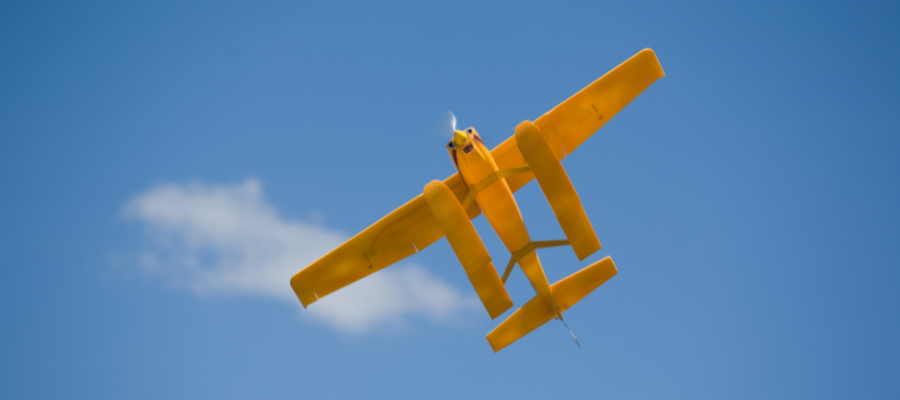Flying RC planes is a lot of fun, but it requires a little finesse to set your plane up correctly for a smooth flying experience. Weight distribution is an important factor all RC plane flyers must know and learn to manage. What symptoms can you look for that indicate your RC plane is tail heavy?
A plane is tail-heavy when the nose is too light, or the tail is too heavy. This causes takeoff problems, flight stability problems, sluggish controls, a nose-high attitude in level flight, and difficulties landing. Adjusting the center of gravity or using lighter components can help with the issue.
Balance and weight distribution can affect the RC plane’s stability in the air and the flying experience for the operator. If the plane is not balanced correctly, it can become unstable and difficult to control, leading to crashes and damage to the plane. I recommend checking out this guide to learn more about RC plane weight distribution.

One common issue that RC pilots face is a tail-heavy plane, which can cause various problems during flight. We will explore the symptoms of a tail-heavy RC plane and how to fix and prevent this issue.
Symptoms Of A Tail Heavy RC Plane
Remote-controlled (RC) planes are a popular and growing hobby among enthusiasts of all ages. RC planes come in various sizes and complexities to suit a wide range of skill levels.
Whether your RC plane is a beginner model or an advanced replica, learning to balance your plane correctly is crucial for safety and an enjoyable flying experience.
Balance is important for every RC plane, whether powered by electric motors, gasoline engines, or jet engines. The type and placement of the motor play an important role in the weight distribution and balance of the aircraft.
Side-note: If you’re looking to get the most out of your RC plane’s motor performance, then you may be interested in this article about brushless RC motors losing power over time. It explores the question of whether these motors lose power over time and provides some valuable insights on maintaining it.
A properly balanced plane with a properly located center of gravity is essential for a safe and enjoyable flight, making it easier for beginners at the controls. See how to find center of gravity of any RC plane for further information.
Weight distribution is not the only cause for a tail-heavy RC plane, but we will get to the causes shortly. Let’s have a look at how to diagnose a tail-heavy issue with your RC plane.
How To Tell If Your RC Plane Is Unbalanced
A tail-heavy RC plane is one in which the center of gravity (CG) is located too far back, towards the plane’s tail. This can cause various issues and symptoms, including the following.
- Difficulty taking off. A tail-heavy plane may struggle to gain altitude during takeoff, as the nose tends to pitch up, making it difficult to achieve lift.
- Instability in flight. A tail-heavy plane can be unstable and difficult to control, especially in windy conditions or when performing maneuvers.
- Difficulty landing. Landing a tail-heavy plane can be tricky, as the nose tends to pitch up, making it hard to maintain a steady descent and approach.
- Unresponsive controls. A tail-heavy plane may not respond as expected to control inputs, making it hard to maneuver and control.
- Nose-high attitude in level flight. A tail-heavy plane will tend to fly with a nose-high attitude, which can cause drag and reduce the plane’s speed and efficiency. By the way, I would also recommend you to check out this guide where I explain common signs of a nose heavy RC plane and how to fix them since it’s a related issue.
So, recognizing these symptoms to diagnose a tail-heavy plane and taking corrective action before flying is essential. If you continue to fly a tail-heavy plane, it can lead to crashes, damage to the plane, and potential injury.
Now what if you’ve encountered a situation where your RC plane seems to be moving in reverse? It’s a puzzling scenario, but it happens more often than you might think. After considerable research and trials, I’ve put together a comprehensive guide that I wish I had when I first started. It’s right here: Is Your RC Plane Going Backwards?
Causes Of A Tail Heavy RC Plane
Weight distribution is the most common aspect people think of concerning a tail-heavy RC plane, but this is only one possible issue.
Some of the most common causes you can investigate to troubleshoot a tail-heavy situation include the following.
- Improper CG (center of gravity). If the CG of the plane is too far back towards the tail, the plane will be tail-heavy. This can happen if the battery, receiver, or other heavy components are located toward the back of the plane.
- Incorrect weight distribution. If the weight of the plane is not distributed evenly, it can cause the CG to shift towards the tail, making the plane tail-heavy. This can happen if the wings are placed too far back on the fuselage or if cargo in the plane is not evenly distributed. You may also find it helpful checking out my detailed guide on the weight carrying potential of RC planes.
- Improperly balanced control surfaces. If the control surfaces, such as the elevator or rudder, are not balanced correctly, it can cause the plane to be tail-heavy. This can happen if the control surface is not adjusted properly or if the servo controlling the surface is not centered.
- Incorrect motor placement. If the motor is mounted too far back on the plane, it can cause the plane to be tail-heavy. This can happen if the motor mount is not positioned correctly or if the motor is too heavy for the plane. This issue is more common in wing-mounted motors or tail or rear-mounted motors, such as jet engines.
Identifying the root cause of a tail-heavy plane is essential to fixing the issue and preventing it from recurring.
How To Fix A Tail Heavy RC Plane

Fixing a tail-heavy RC plane involves adjusting the CG or redistributing the plane’s weight to shift the CG towards the front end of the plane.
The following steps can help you to fix the problem of a tail-heavy plane.
Adjust the plane’s center of gravity (CG) by moving the battery or adding weight. The easiest way to shift the CG towards the front of the plane is by moving the battery or adding weight to the nose of the plane. You can add weight in the form of lead tape or small weights until the CG is in the correct position.
- Check weight distribution and adjust if necessary. Ensure the plane’s weight is evenly distributed so the CG is in the correct position. If one wing or one side of the plane is heavier than the other, adjust the weight distribution by moving the components around until the weight is balanced.
- Rebalance control surfaces. Check the balance of the control surfaces, such as the elevator or rudder, and adjust them if necessary. You can add small weights to the control surface to balance it correctly or adjust the servo’s center point to ensure the surface is centered.
- Check motor placement and adjust if necessary. Ensure that the motor is mounted in the correct position and is not too heavy for the plane. If the motor is too far back, move it forward to shift the CG toward the front of the plane. This option is not always possible, depending on how the motor is mounted. If it is impossible to move the motor, you may need to add counter-balance weight to the plane’s nose.
This also brings us to an essential point – understanding the thrust to weight ratio of your RC plane. It’s a critical factor that plays a huge role in the performance and maneuverability of your model. Check out this article to deepen your understanding of how much thrust your RC plane needs relative to its weight.
Once you have adjusted the plane’s CG or weight distribution, test it in a safe environment to ensure it is now balanced correctly. If the plane is still tail-heavy, repeat the above steps until the CG is in the correct position.
Note: Changing the weight distribution or CG of the plane can affect its performance, so it is essential to test the plane thoroughly before flying.
Tips For Preventing A Tail Heavy RC Plane
Preventing a tail-heavy RC plane involves proper planning, construction, and maintenance. This is especially true if you build your RC plane from plans.
Preventing the tail-heavy issue during the build is a much cleaner and easier way to avoid the problem, rather than trying to rectify it later.
- Plan your build. Before building your plane, plan the layout of the components and ensure that the weight is distributed evenly. Use a CG calculator to determine the correct CG and ensure that the battery, receiver, and other heavy components are positioned towards the front of the plane.
- Use lightweight components. Use lightweight components such as foam or balsa wood to decrease the plane’s weight. Heavy components such as motors and batteries should be carefully selected to ensure they are not too heavy for the plane.
- Balance control surfaces during construction. During construction, balance the control surfaces, such as the elevator and rudder, to ensure they are not too heavy and are centered correctly.
- Regularly check and adjust CG. Regularly check the CG of the plane and adjust it if necessary, especially after swapping out components. Ensure that the plane’s weight distribution is balanced and the components are positioned correctly.
- Test the plane before flying. Before flying, test the plane in a safe environment to ensure it is balanced correctly and responds to control inputs as expected.
Following these tips can help prevent your RC plane from becoming tail-heavy and remain balanced and stable during flight. Regular maintenance and monitoring of the plane’s balance will help you catch any issues before they cause problems during flight.
Conclusion
A tail-heavy RC plane can be a frustrating and potentially dangerous problem. However, with proper identification of the issue and adjustments to the plane’s weight distribution, balance, and center of gravity, it is possible to fix and prevent this problem.
Following our outlined tips can prevent your plane from becoming tail-heavy and ensure that it remains balanced and stable. Regular maintenance and monitoring of the plane’s balance will help you catch any issues before they cause problems during flight.
I hope that you found this article helpful. Here are some more articles that may be of interest;

